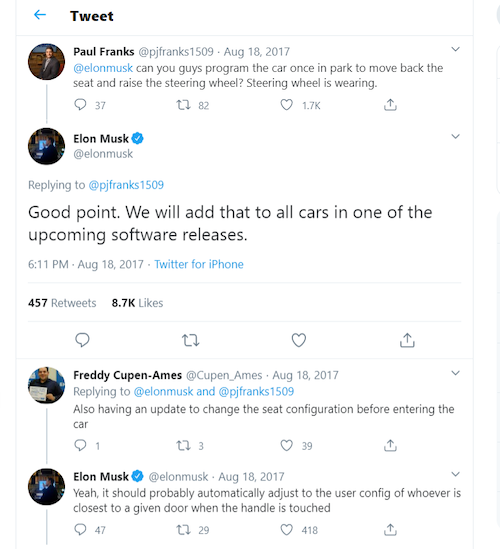
Hello there!
In this article, we will be looking into understanding everything there is to know about conversational marketing. After this article, you will gain a better understanding of how to effectively engage with your audience and get the best results possible. Let us first understand what conversational marketing actually is.

The 3 parts to conversational marketing
Conversational marketing has been a mystery to anyone who has been involved in conversations with someone over time. Whether this is simply a conversation between two people or a brand and its customers, it’s mainly composed of three parts:
Listening
Traditional marketers and advertisers hardly listen as they are too busy yelling and hoping someone finds out what they’re saying valuable.Conversational marketers, on the other hand, also do not dominate the conversation. Whether over phone or social media, conversational marketers spend most of their time determining what their customer cares about so that when they do speak, they make it count.
Related: How To Make Your Platforms Healthy as A Marketer?
Understanding
In a real conversation, each party involved in the conversation builds on the ones before it. If your friend has remarked, for example, that talking about work makes them anxious, and that they had a bad experience at the last place you met, you should try to actively not talk about that topic. Conversational marketing aims to overcome irrelevant experiences like this one by using audience feedback to better personalize interactions.
Engaging
Engaging is an essential part of any conversation however when you ask people what makes a good conversationalist, they’re more likely to say listening than talking. If traditional advertising is the guy yelling into a crowd with a megaphone, conversational marketers are the people chatting with someone over coffee. This kind of intimate, personal trading of information is the conversation that all brands should aim for in conversational marketing.
Where conversational marketing happens
Conversational marketing usually starts and ends with the consumer. And though this is the case with all marketing, where conversational marketing takes an even more direct approach.
Instead of relying on quantitative means like traditional analytics to learn about customers, conversational marketing usually focuses on gathering feedback from more qualitative means. Specifically, it’s founded on gathering feedback through conversations. In the digital age, a majority of the conversations can happen in many different ways in many places online. Here are the most common ways for conversational marketing:
Related: 6 Steps for Writing Simple Copy That Sells!
When you think of a conversation, an email may not be the first thing that comes to mind. This is because correspondence via email doesn’t happen in real-time the way conversations usually do. Still, email is a fantastic conversational way to learn more about your audience. And here’s why: First, the email address is a piece of personal information that people aren’t as hesitant to give you. Name, phone number, address — these are things marketers can be particularly invasive with. Sales letters and phone calls aren’t usually welcomed by consumers, but an email? If they don’t want to read it, your prospects will delete it. Emails are the least invasive way to correspond with customers.
The other thing that makes email so appealing is precisely that it doesn’t happen in real-time. Your audience can also choose to answer whenever they want, whether that’s after a meeting at work or after dinner at home. Ultimately, conversational marketing only works if you can convince people to converse with you. And so you have to go where customers are willing to do that. Email is that medium. Surveys, or a mailing service which simply requests feedback on the most recent purchase or customer service call can also start valuable conversations which improves your marketing.
Related: The 16 Best Marketing Strategies to Try in 2020 Part – 2
Social media
Social media is a little closer to traditional conversation in the way that it works than email is. However, it also doesn’t demand the time and attention that traditional conversation does over a phone or in person. In this same way it’s a great middle-ground between email and phone, that allows users the same benefits: They can already converse with you at their leisure, as they don’t have to divulge information which isn’t already public to do so.
In Conclusion
The additional benefit to both users and brands is that it’s much easier than ever to engage in conversation on social media than in email. Social media was made for conversation. Customers will also want to talk to you there, as they know that even the biggest brands aren’t above engaging with them on platforms like Facebook, Twitter, Instagram, and LinkedIn. We hope you found this article informative in understanding just how conversational marketing works.
Good luck. Thanks for reading!
Related: The 16 Best Marketing Strategies to Try in 2020 Part – 1



Andrina
4 years ago